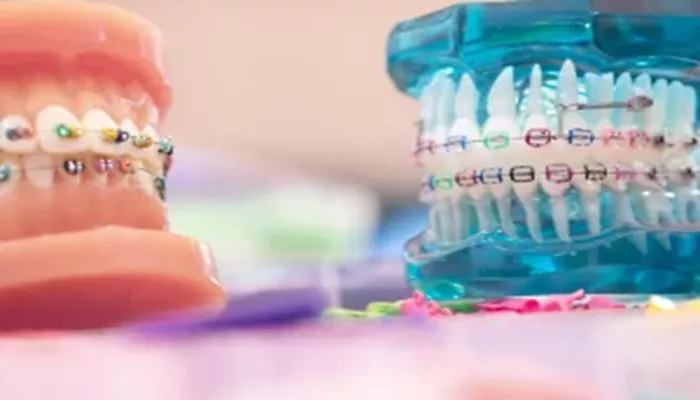Orthodontic treatment is a specialized field of dentistry focused on diagnosing, preventing, and correcting misaligned teeth and jaws. Various tools and instruments are essential in orthodontics to ensure effective treatment and patient comfort. One such instrument is the orthodontic curette. This article will explore the role of the orthodontic curette in orthodontic treatment, its types, uses, and importance in maintaining oral health during orthodontic care.
Understanding Orthodontic Curettes
What is an Orthodontic Curette?
An orthodontic curette is a dental instrument designed for specific tasks in orthodontic procedures. It is typically a small, hand-held tool with a curved, spoon-like end. This unique shape allows orthodontists to perform delicate tasks in the oral cavity, particularly in areas that are difficult to reach. The primary purpose of an orthodontic curette is to remove debris, plaque, and calculus from around braces and other orthodontic appliances.
Types of Orthodontic Curettes
Orthodontic curettes come in various shapes and sizes, each designed for specific functions. The two main types of curettes used in orthodontics are:
Standard Curettes: These have a simple curved design and are used for general cleaning and debris removal around brackets and wires.
Specialized Curettes: These may have additional features, such as different angles or sizes, allowing for more precise cleaning in hard-to-reach areas. Some specialized curettes may also have a double-ended design, featuring different shapes on each end for versatility.
The Role of Orthodontic Curettes in Treatment
1. Debridement of Orthodontic Appliances
One of the primary roles of the orthodontic curette is to aid in the debridement of orthodontic appliances. When patients wear braces, food particles and plaque can accumulate around the brackets and wires. This buildup can lead to various oral health issues, including cavities and gum disease.
How Curettes Help:
The curved design of the curette allows orthodontists to access tight spaces around brackets and wires.
It effectively removes plaque and debris, ensuring that the area remains clean and free from harmful bacteria.
2. Maintenance of Oral Hygiene
Maintaining good oral hygiene is crucial during orthodontic treatment. Patients with braces must be diligent in their oral care routine to prevent complications. Orthodontic curettes play a vital role in this process.
Benefits:
Orthodontists can use curettes during regular check-ups to clean around appliances, helping patients maintain optimal oral hygiene.
The use of curettes can educate patients on the importance of cleaning their braces and surrounding tissues properly.
3. Prevention of Gum Disease
Gum disease, or periodontal disease, is a significant concern for orthodontic patients. The accumulation of plaque and tartar around braces can lead to inflammation and infection of the gums. By using an orthodontic curette, orthodontists can help prevent these issues.
Preventive Measures:
Regular cleaning with a curette reduces the risk of gum disease by removing plaque buildup.
By maintaining healthy gums, patients can ensure that their orthodontic treatment proceeds without complications.
4. Facilitating Orthodontic Adjustments
During orthodontic treatment, adjustments to braces are frequently necessary to ensure proper alignment of teeth. The orthodontic curette can assist in these adjustments by providing a clean working area.
Adjustment Process:
Before making adjustments, orthodontists can use curettes to clean around brackets, ensuring that the area is free from debris.
A clean surface allows for better bonding of orthodontic materials and enhances the effectiveness of adjustments.
5. Assisting in Orthodontic Emergencies
Orthodontic emergencies can occur during treatment, such as broken brackets or wires that can cause discomfort or pain. An orthodontic curette can be an essential tool in managing these situations.
Emergency Care:
In the event of a broken bracket, orthodontists can use a curette to clean the area and prepare it for repair.
The curette can help remove any debris that may hinder the repair process.
Importance of Orthodontic Curettes
1. Enhancing Treatment Outcomes
The use of orthodontic curettes contributes to better treatment outcomes. By ensuring that the oral environment is clean, orthodontists can facilitate effective tooth movement and alignment.
Positive Effects:
A clean mouth reduces the likelihood of complications that can delay treatment.
Patients are more likely to achieve their desired results when their oral health is maintained.
2. Promoting Patient Comfort
Comfort is a crucial aspect of orthodontic treatment. The use of an orthodontic curette can help minimize discomfort associated with plaque buildup and gum inflammation.
Comfort Factors:
Regular cleaning with a curette can alleviate discomfort caused by irritation from debris around braces.
Patients often feel more comfortable and confident in their treatment when they know their oral health is being monitored.
3. Educating Patients
Orthodontic curettes also play a role in patient education. When orthodontists use these instruments, they can demonstrate proper oral hygiene techniques to patients.
Educational Benefits:
Patients can learn how to clean around their braces effectively, reducing the risk of complications.
Providing education empowers patients to take an active role in their oral health during treatment.
Conclusion
The orthodontic curette is a vital tool in orthodontic treatment, playing a significant role in maintaining oral hygiene, preventing gum disease, and enhancing treatment outcomes. Its unique design allows orthodontists to clean around braces effectively, ensuring that patients can achieve optimal results from their orthodontic care. By facilitating regular cleaning, assisting in adjustments, and promoting patient education, the orthodontic curette contributes to a more comfortable and successful orthodontic experience. As patients navigate their journey towards a healthier, straighter smile, the importance of tools like the orthodontic curette cannot be overstated. Regular use of this instrument by orthodontists not only promotes oral health but also fosters a positive and effective orthodontic treatment process.
Related topics:

